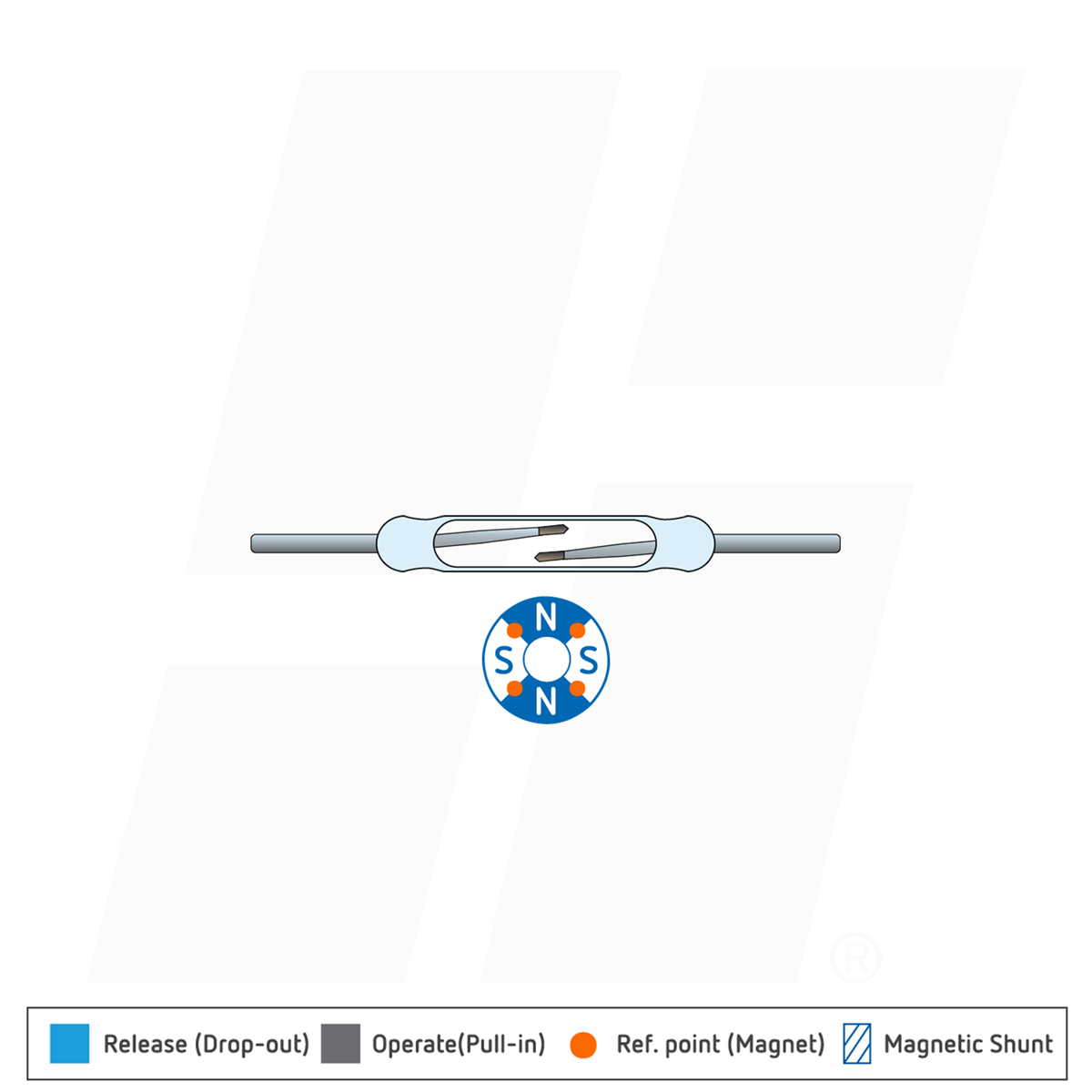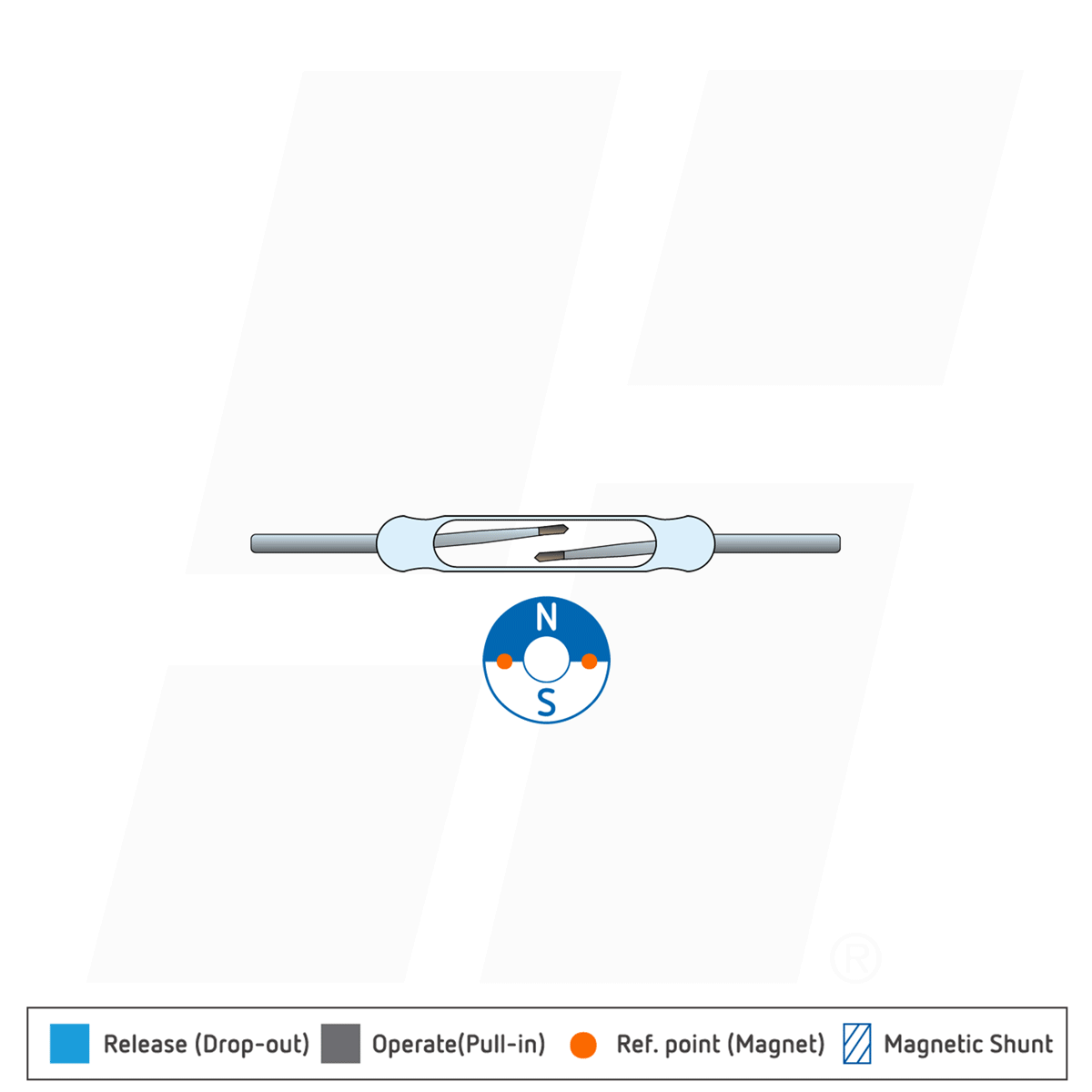Introduction
Magnet interaction is the primary use for a reed switch in a sensing application. In other words, pairing a permanent magnet with a reed switch is referred to as a reed sensor. Likewise, reed switch actuation mostly occurs using a permanent magnet as the actuator. The magnet is always the moving object in the sensing area. However, the reed switch is in a fixed position.
Additionally, it is important to understand how a sensor operates using magnet interaction. Reed sensors work in one of four contact states.
Switch Contact States
- Normally Open (Form A) – The normally open state is where the contacts rest in an open mode. The reed switch consumes no power in the open state.
- Normally Closed (Form B) – A normally closed contact state refers to the switch contacts resting in a closed position.
- Changeover (Form C) – Changeover occurs when a normally closed contact makes or opens before a normally open contact breaks or closes.
- Latching / Bistable (Form E) – A latching or bistable mode is a more advanced use for the sensor. The contacts can either be in a closed or open state. The methods used depends on the actual application. A permanent magnet is used to change the contact state by reversing the magnetic polarity.
Before we explore each of these ways, it is important to understand the switch magnetic fields. Various magnet positions and movement will cause the reed switch’s on/off domain to change. Furthermore, the actual closure and opening points will vary considerably for different Reed switches and magnet sizes and strengths.
The below reed switch actuation examples show a small sample of sensing applications. These examples mainly focus on using normally open and normally closed contact applications.
Reed Switch And Magnet Actuation
Single Actuation
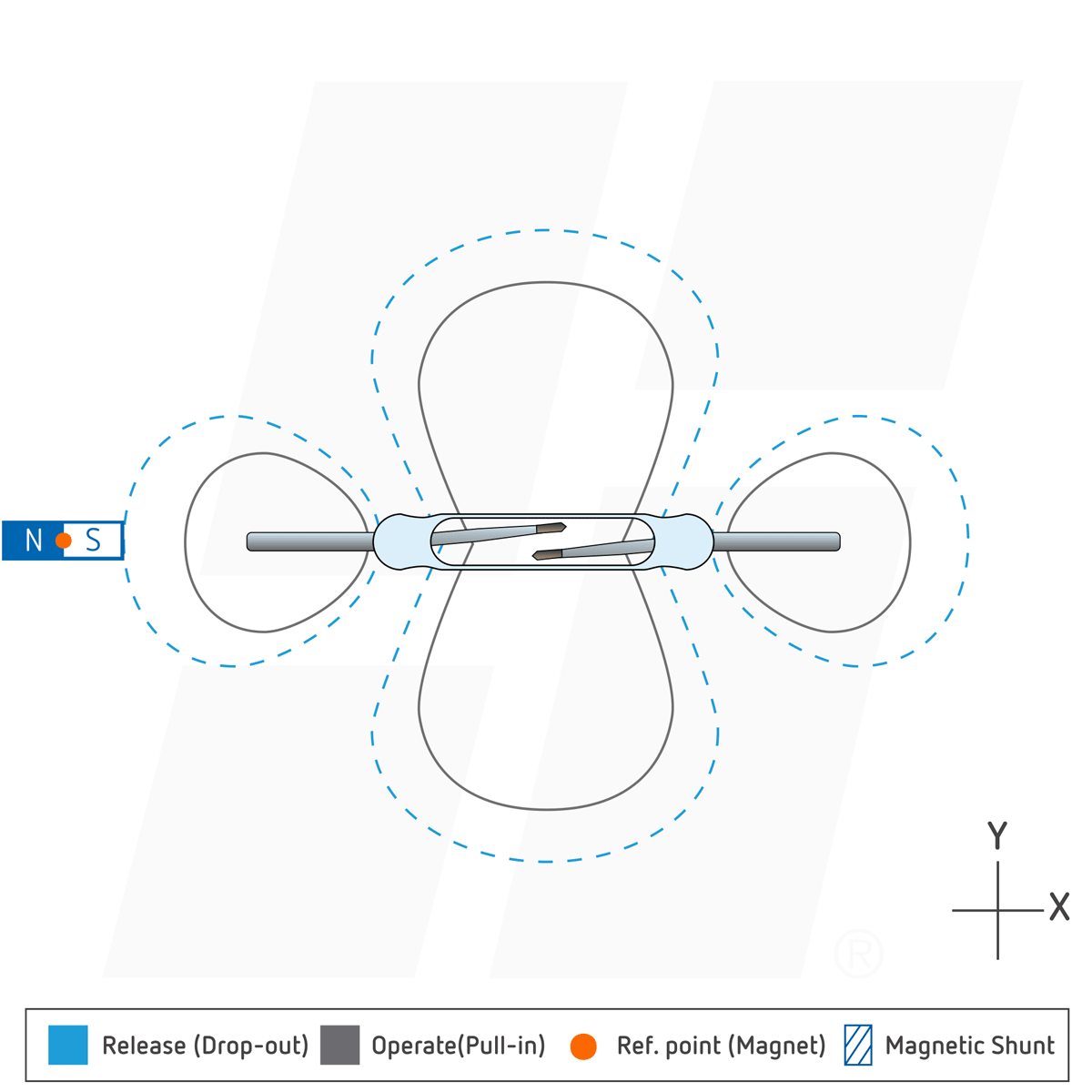
Actuator Type: Bar Magnet
Position: Parallel
Movement: Parallel
Actuation(s): Single
Contact Form/Mode: Form A (Normally Open)
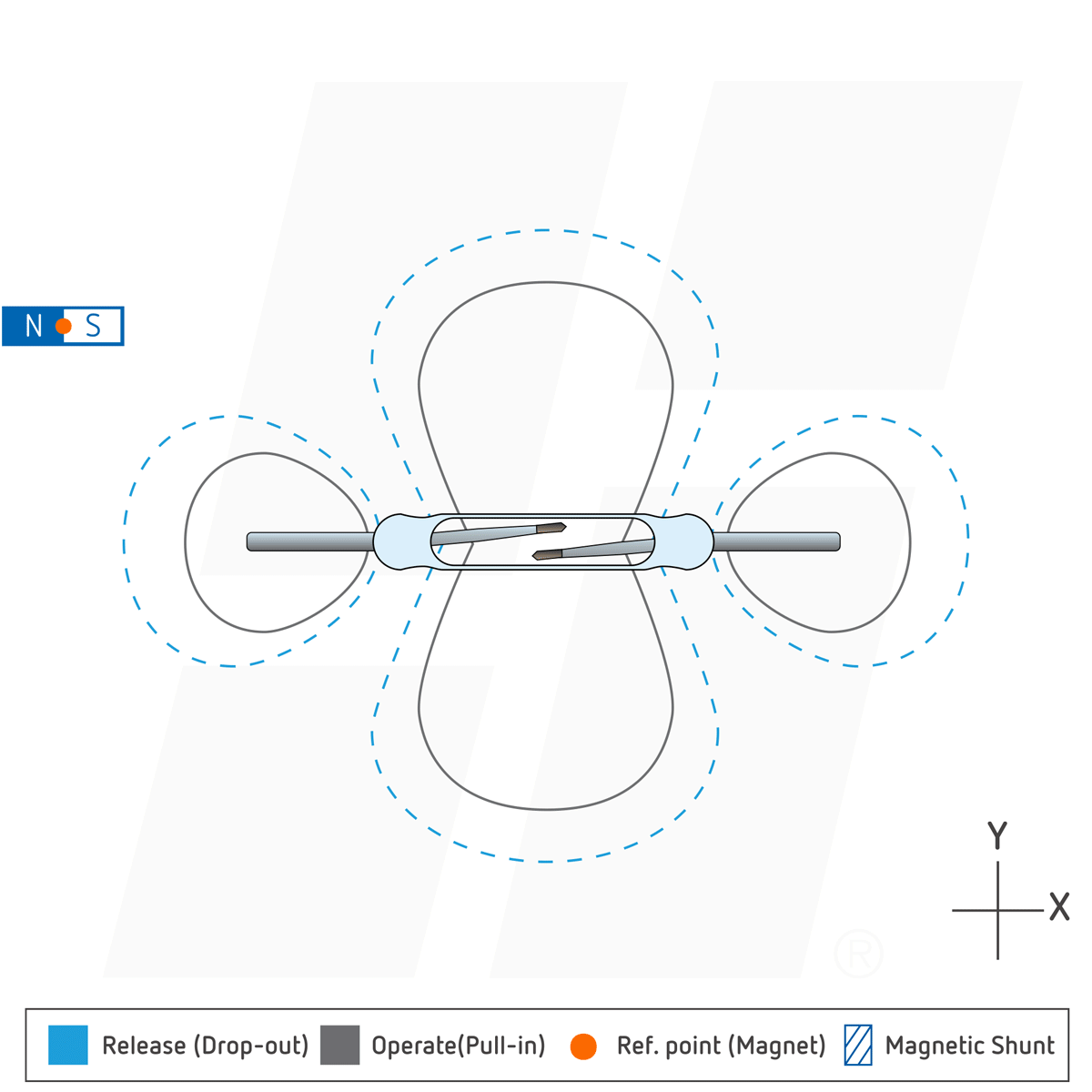
Actuator Type: Bar Magnet
Position: Parallel
Movement: Parallel
Actuation(s): Single
Contact Form/Mode: Form A (Normally Open)

Actuator Type: Bar Magnet
Position: Parallel
Movement: Perpendicular
Actuation(s): Single
Contact Form/Mode: Form A (Normally Open)
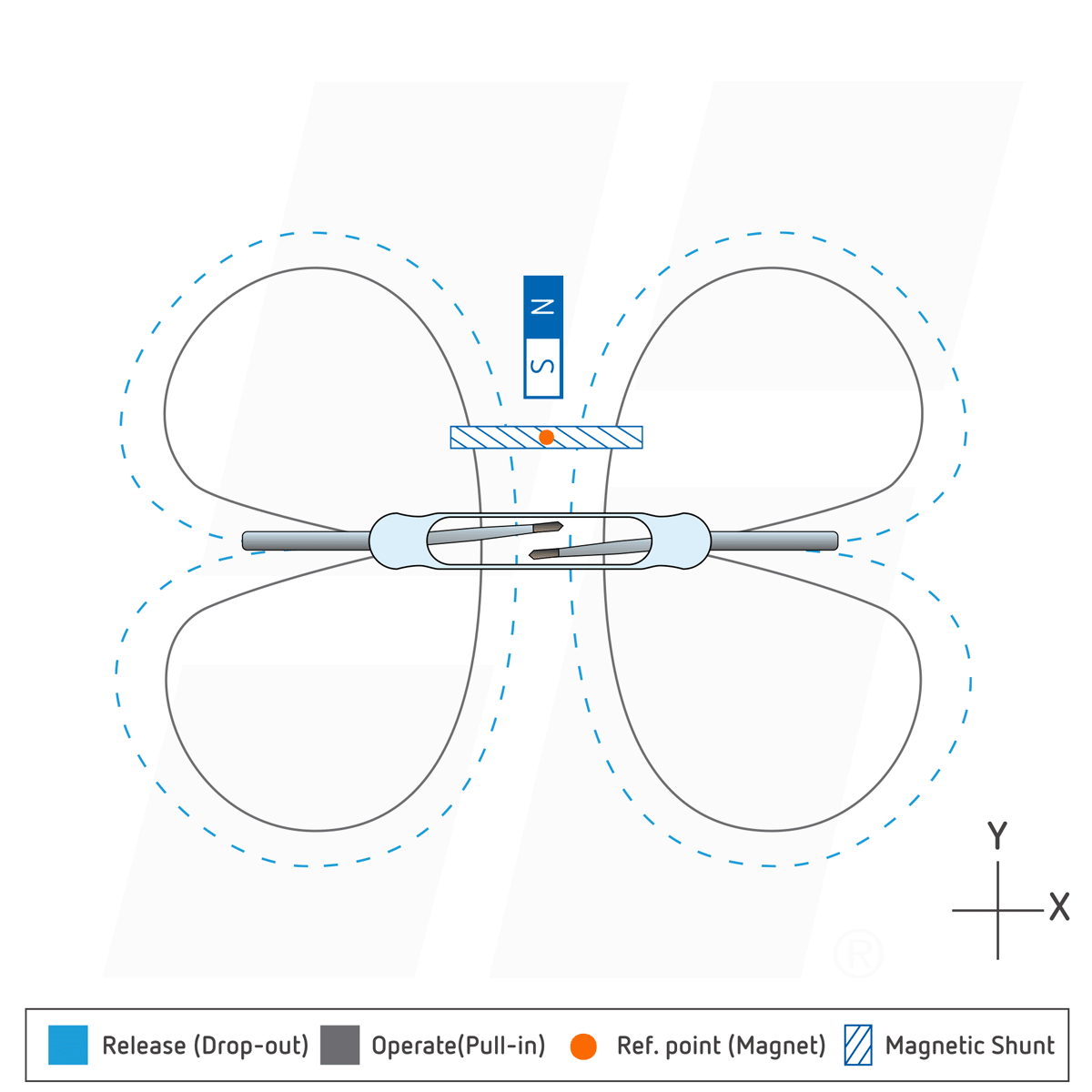
Actuator Type: Bar Magnet
Position: Perpendicular
Movement: Perpendicular
Actuation(s): Single
Contact Form/Mode: Form A (Normally Open)
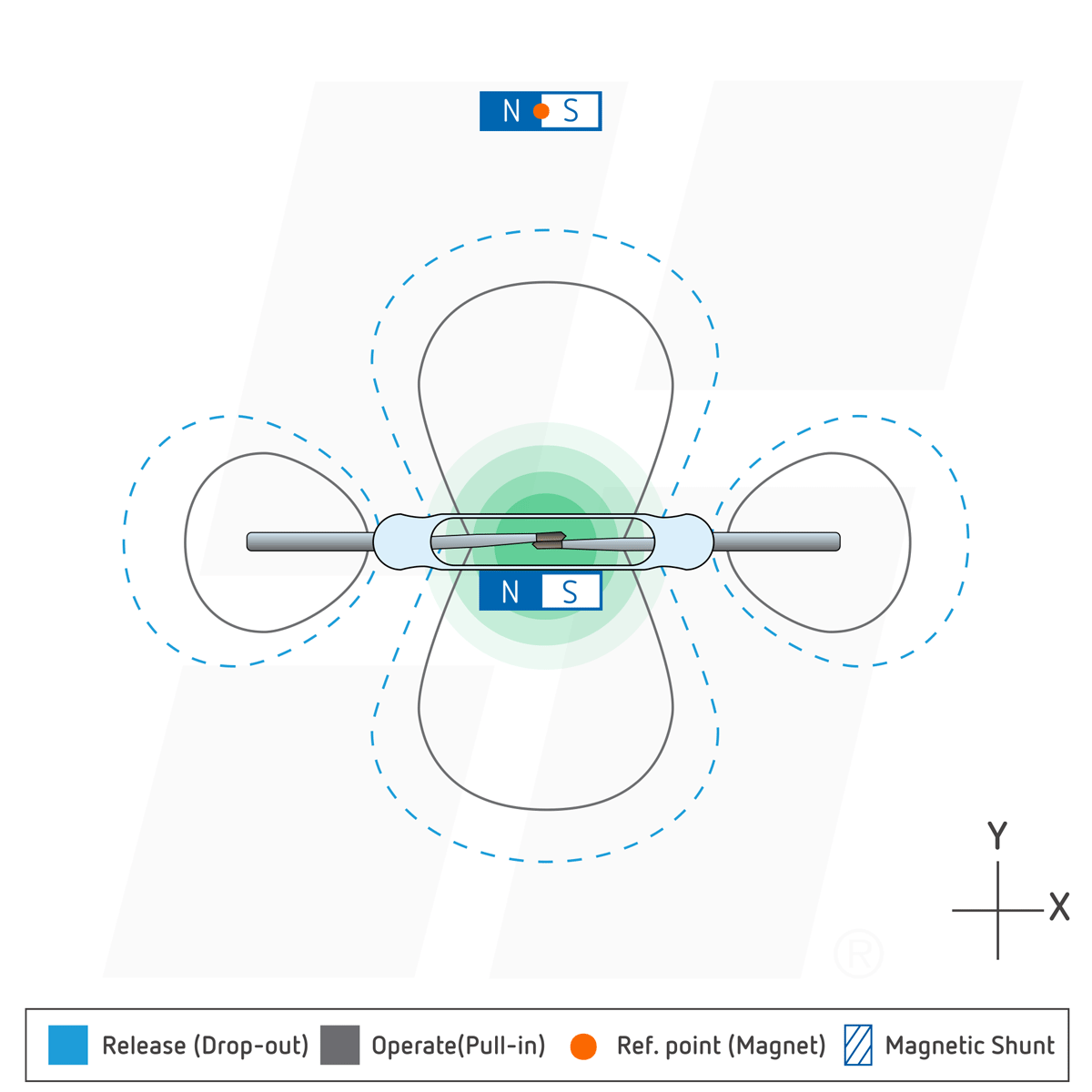
Actuator Type: Bar Magnet
Position: Parallel
Movement: Perpendicular
Actuation(s): Single
Contact Form/Mode: Form B (Normally Closed)
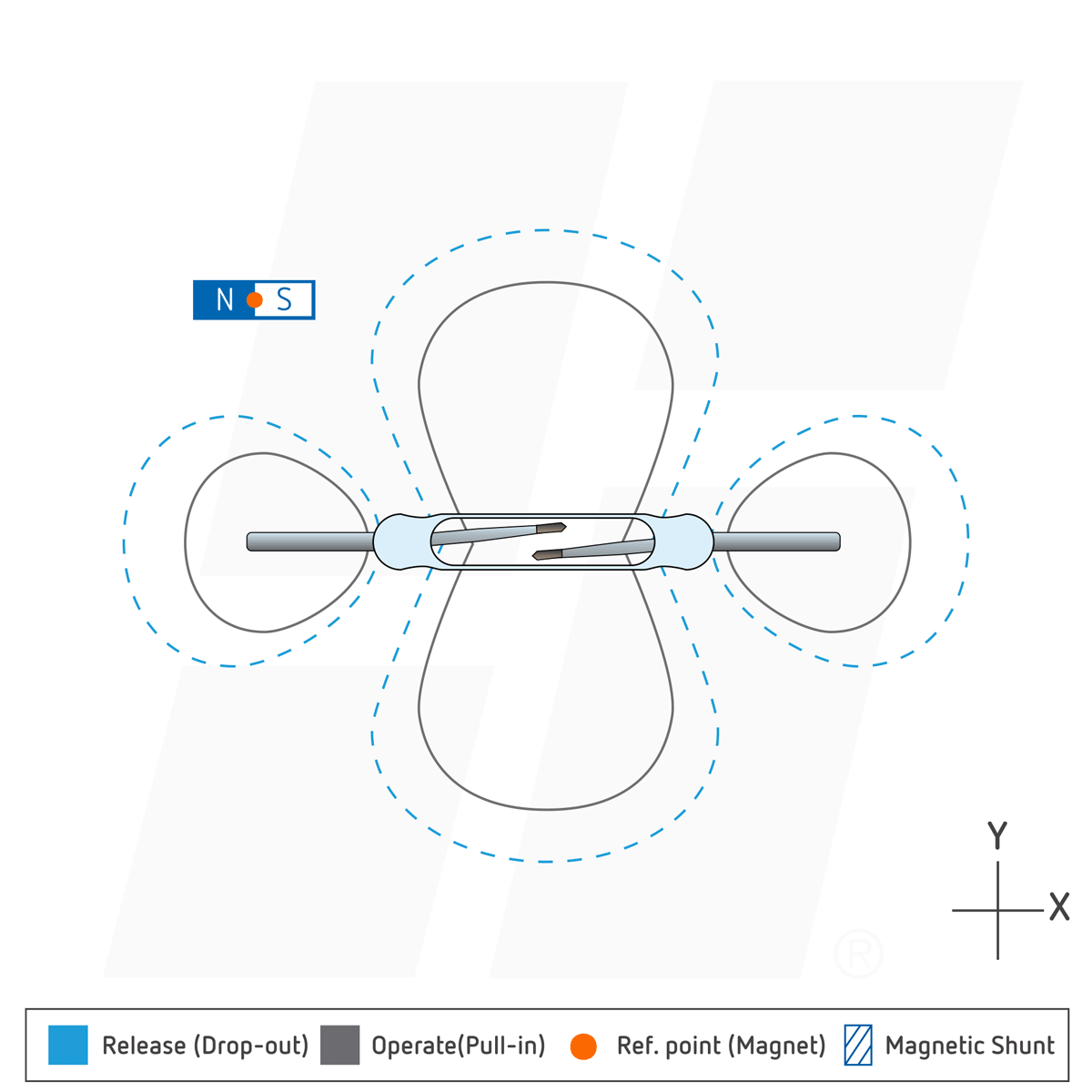
Actuator Type: Bar Magnet
Position: Parallel
Movement: Perpendicular
Actuation(s): Single
Contact Form/Mode: Form A (Normally Open)
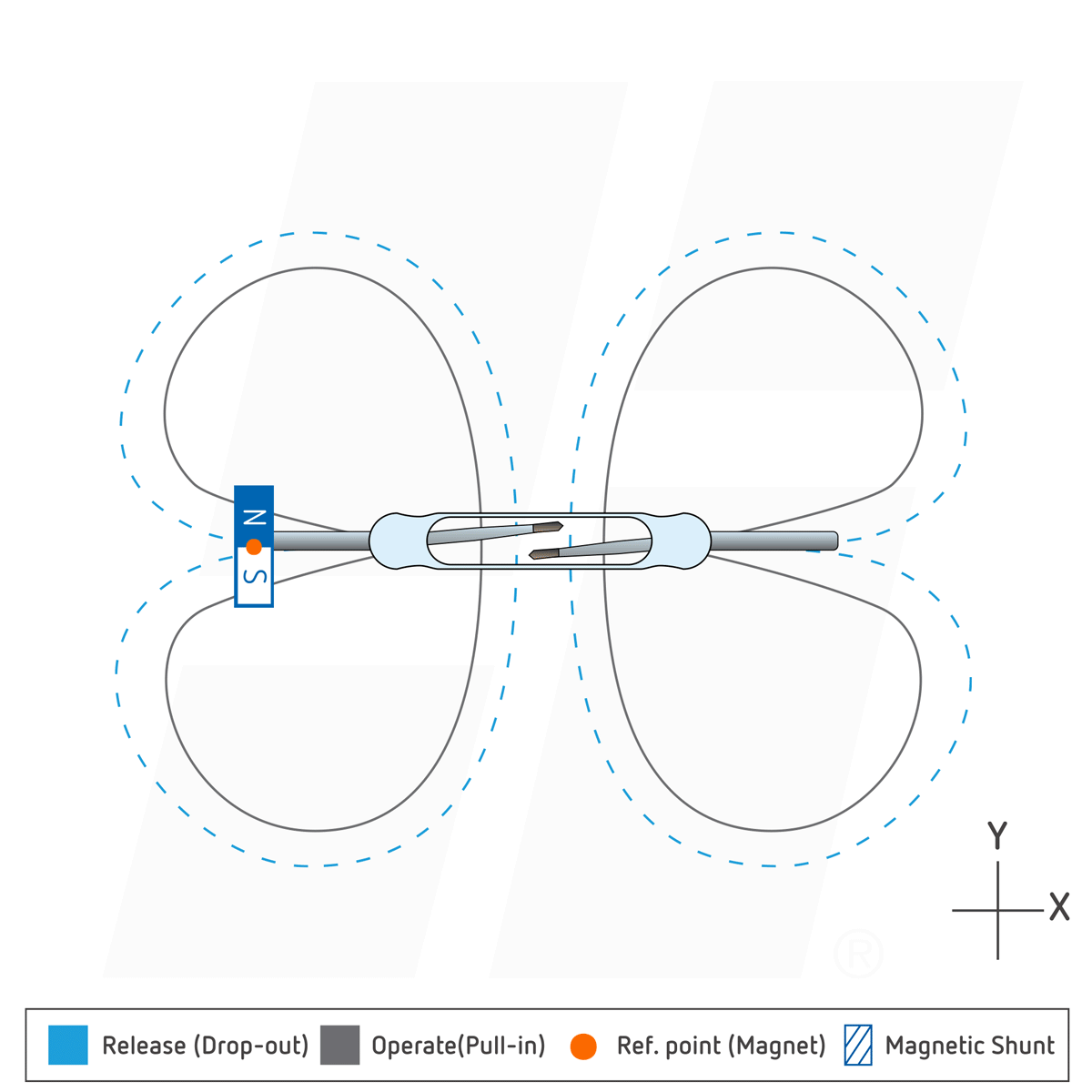
Actuator Type: Bar Magnet
Position: Perpendicular
Movement: Perpendicular
Actuation(s): Single
Contact Form/Mode: Form A (Normally Open)

Actuator Type: Bar Magnet
Position: Parallel
Movement: Pivot
Actuation(s): Single
Contact Form/Mode: Form A (Normally Open)
Multiple Actuations

Actuator Type: Bar Magnet
Position: Parallel
Movement: Parallel
Actuation(s): Multiple
Contact Form/Mode: Form A (Normally Open)

Actuator Type: Bar Magnet
Position: Perpendicular
Movement: Parallel
Actuation(s): Multiple
Contact Form/Mode: Form A (Normally Open)

Actuator Type: Bar Magnet
Position: Above
Movement: Rotary
Actuation(s): Multiple
Contact Form/Mode: Form A (Normally Open)
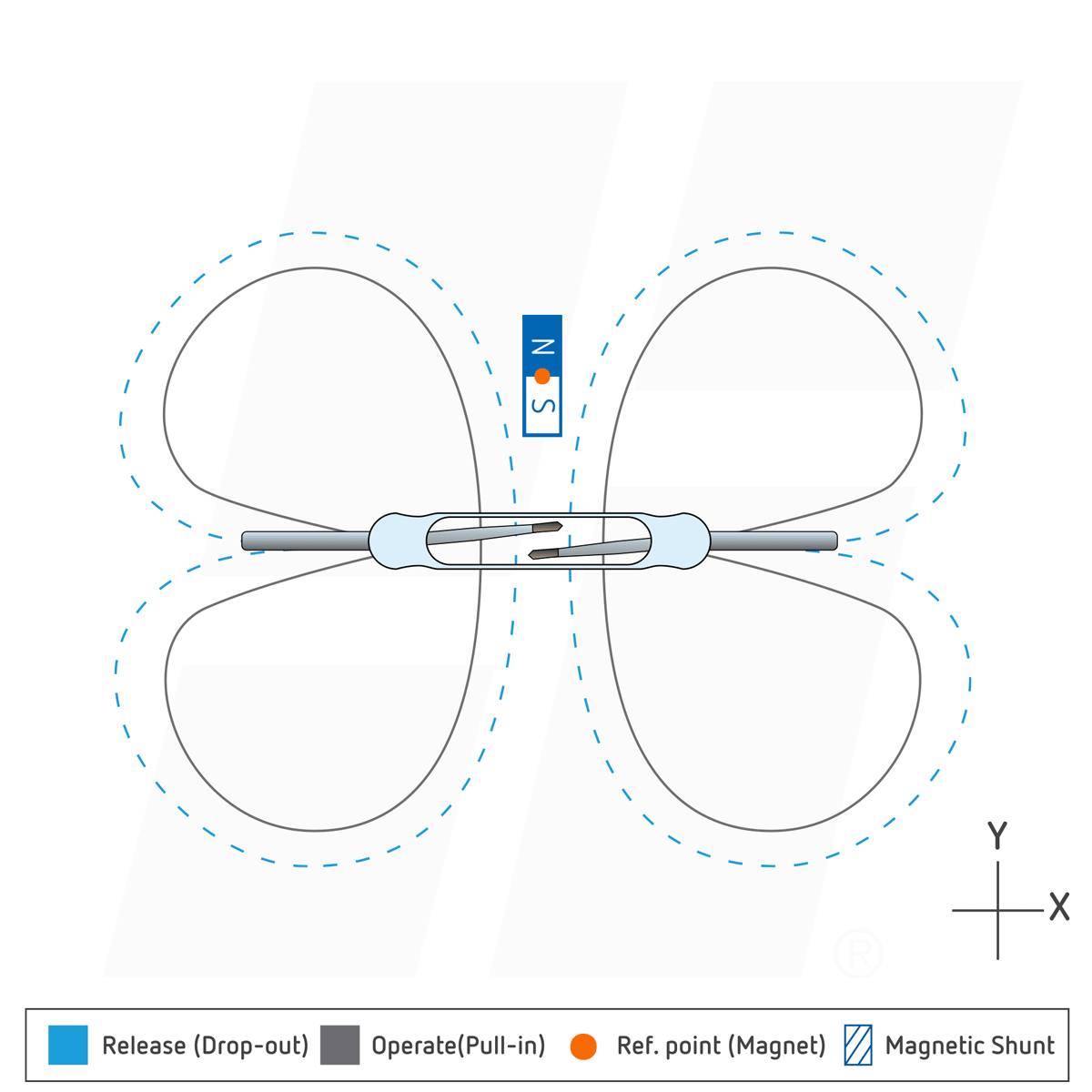
Actuator Type: Bar Magnet
Position: Adjacent
Movement: Rotary
Actuation(s): Multiple
Contact Form/Mode: Form A (Normally Open)



